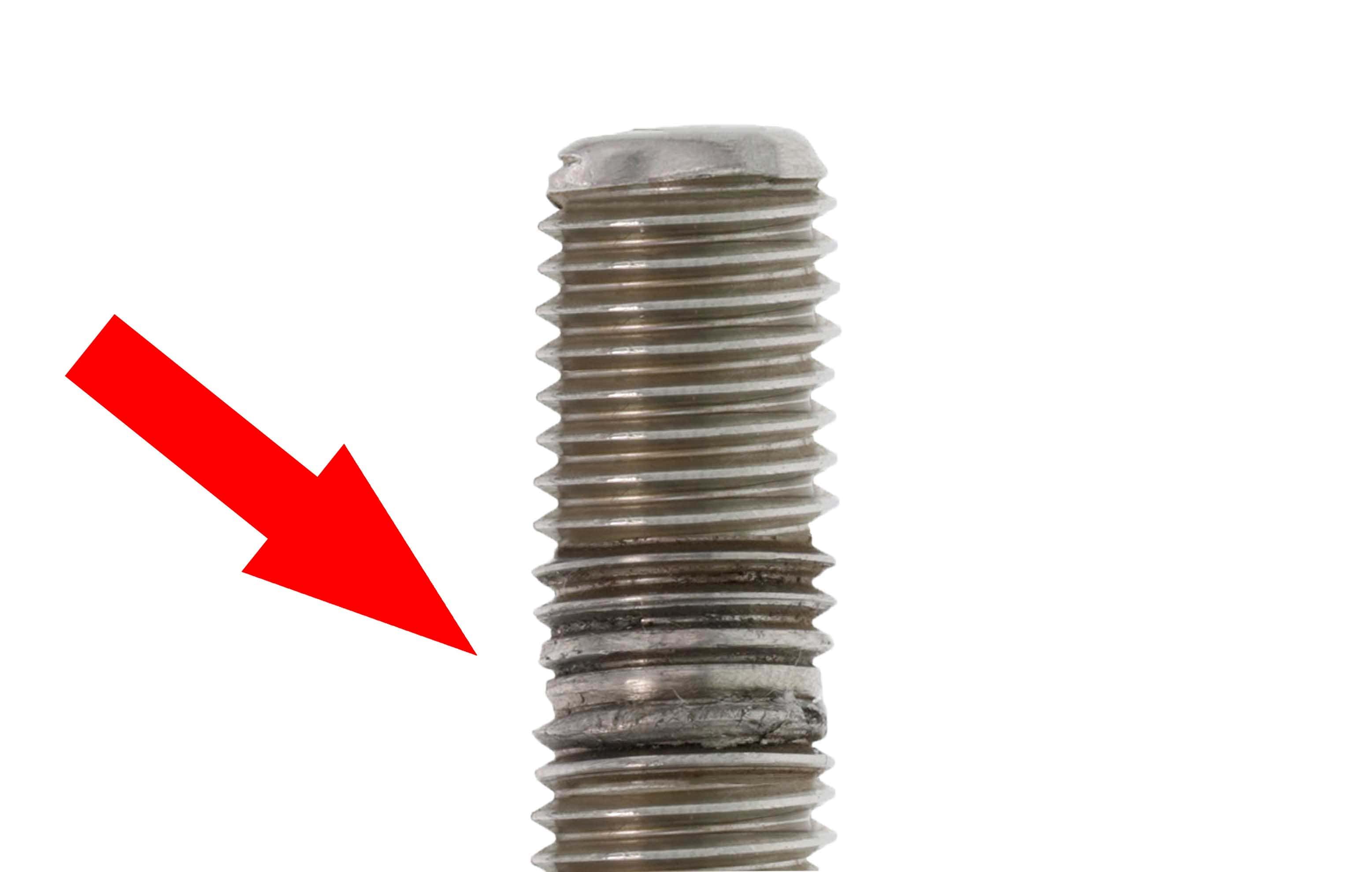Have you ever had a stainless steel bolt or an aluminum bolt seize while driving a nut on it? It is more than likely the effects of galling. Many people experience this phenomenon but understand little about the science behind it. Here is a detailed explanation of galling.
WHAT IS GALLING?
Galling occurs when two sliding surfaces exhibit adhesive wear. Commonly on stainless steel and aluminum fasteners. It is comparable to cold welding.
The ASTM G40 standard says “Galling is a form of surface damage arising between sliding solids, distinguished by microscopic, usually localized, roughening and creation of protrusions (e.g.: lumps) above the original surface”.
Unlike gouging, galling will cause a surface to be mechanically spalled due to adhesive wear and will be visible on a surface. It is almost instant as the raised lumps cause more damage and will quickly seize. It commonly occurs on bolts and screw fasteners.
The use of threaded inserts helps prevent galling when using fasteners such as aluminum and stainless steel that are more likely to exhibit galling.
Here is an example of galling.

REQUIREMENTS FOR GALLING
The two main factors needed for galling is metallic-bonding and plasticity. When adhesive wear occurs metallic-bonding is the main action that allows it to happen but plasticity (which is the ability to deform without breaking) plays a role.
To determine if a material is more likely to suffer galling than another there is a mathematical calculation also known as ductility. This measures the material’s ability to undergo plastic deformation before rupturing or breaking.
When turning a bolt onto a nut and galling occurs it usually starts with adhesive wear on a microscopic scale starting with the asperities but quickly grows.
While this happens, friction occurs causing the surface to change its plasticity. This will also cause more adhesive wear, eventually, a lump will form and cause the surface to be mechanically spalled.
PREVENTION
Some common methods to prevent galling is to use a material that is less likely to suffer from galling. Steel has less plasticity than aluminum or stainless steel. Some situations call for different alloys such as aluminum and stainless steel which are likely to exhibit galling.
The use of a nylon lock nut may cause galling when used on stainless steel fasteners due to the added pressure the nylon insert causes between the mating surfaces.
You can use a form of lubricant such as anti-seize, oil additives, even WD-40 can help. The objective is to reduce the friction and heat which causes the change in plasticity.
The use of coarse threads if possible would be a better choice since they have greater thread allowance compared to a fine thread. If you are using a drill it will help to slow down the speed or even use a hand tool at a slower speed.







